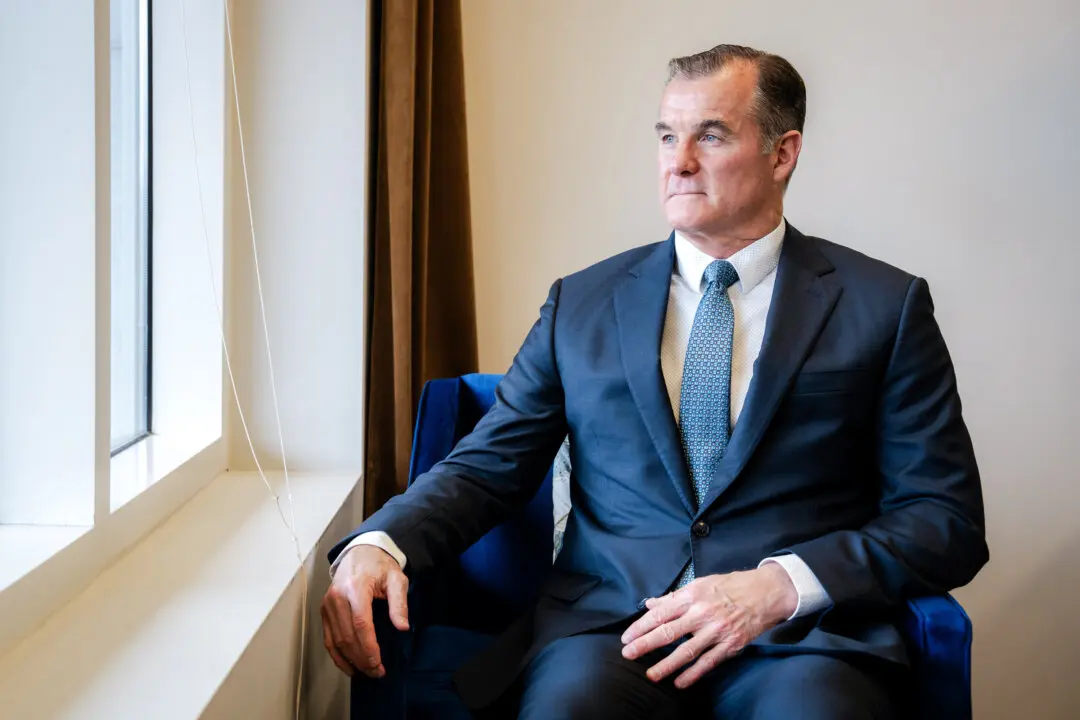NEW YORK—By the Taxi and Limousine Commission’s (TLC) count, 64 percent of the city’s 90,000 disabled residents live or travel outside of Manhattan, yet street hails are currently not an option for them.
The state has required that the city come up with an accessibility plan, and TLC has been meeting with various stakeholder groups.
According to a draft plan TLC submitted to City Council, half of all 18,000 street hail livery cabs—the green Boro Taxi program—will be made accessible. But there is no deadline set yet, and the 50 percent goal is dependent on TLC issuing the second and third rounds of 6,000 permits.
Currently 20 percent of the 6,000 permits issued in the first round were for wheelchair-accessible vehicles, but at any given time only about a third of those vehicles are on the road.
“Up to about a week and a half ago, the TLC was pushing us to 33 percent by 2024,” said Edith Prentiss, a power-wheelchair user and accessibility advocate living in Northern Manhattan. At a City Council hearing Monday she said the advocates pushed, and the city listened.
TLC expects to start issuing the second round of permits mid-August, 45 percent of which will be accessible, bringing the total accessibility of the boro taxi fleet up to 33 percent by summer’s end.
Quick Success
TLC Commissioner Meera Joshi said she was surprised with how quickly the Boro Taxi program took off. The first boro taxi permit was issued about a year ago, on June 12, and since then nearly 6 million trips have been taken—largely between the outer boroughs.
The program was created to replace the problem of illegal street hails, and it’s working, Joshi said. “It’s a well-deserved, meaningful, needed service.”
Permits are issued to qualified For Hire Vehicle drivers or vehicle owners who have been in good standing for one year or more. They can only have one permit for a regular vehicle, or five permits for wheelchair accessible vehicles. Permits cannot be transferred or resold without TLC authorization.
Boro taxi driver Zahir Ahmad purchased five wheelchair accessible vehicle permits and said the program has changed his life. He has gone from being an overworked livery cab driver stuck haggling with bargaining customers on a daily basis to being a small-business owner.
“I’m making a good living for myself, my children, and my family, driving a green cab, no doubt,” Ahmad said.
But, the only one of his five vehicles in use is the one he is driving. Ahmad has trouble finding drivers who have taken the accessibility training course and who have had their TLC license for a year, and Ahmad figures if they have all this, wouldn’t they want to drive their own cars?
Other than the hassle of finding other drivers, Ahmad said he has nothing but good things to say about boro taxis. And with a wait list of 6,300 prequalified drivers and only 6,000 permits available this year, Ahmad may hear from more drivers.
Boro Taxi Trips
- Bronx/Northern Manhattan: 1.8 million
- Queens: 1.4 million
- Brooklyn: 1.3 million
- Staten Island: 1,600
Percentage of trips into Manhattan
- Bronx: 4%
- Brooklyn: 21%
- Northern Manhattan: 33%
- Queens: 9%
- Staten Island: 2%





